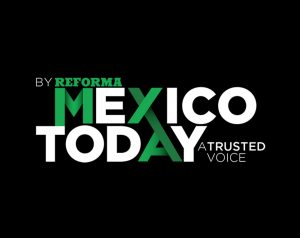 By Heidi Jane Smith *
By Heidi Jane Smith *
President Joe Biden took the stage last Friday at UN’s COP27 summit to say that the U.S. was back as a global leader in the fight against climate change after the Trump years. As Biden addressed the attendees to the Sharm El-Sheikh summit, the White House presented a long list of initiatives hoping to demonstrate the U.S.’s renovated commitment to tackle the climate crisis. Years before the passing of the U.N.’s Paris Climate Agreement in 2015, President Barack Obama had already put forward relevant initiatives that helped pave the way to Paris. One such initiative the Obama Administration strongly promoted was the Energy and Climate Partnership of the Americas (ECPA). Founded in 2009, the ECPA offered leaders from different Ministries -energy, environment and the economy- a mechanism to develop voluntary bilateral or multi-country initiates to combat climate change.
At the time, the fact that the countries in the Americas -including Mexico- were willing to discuss cross-cutting policies against climate change was considered innovative. The merging of policies and the dialogue that ensued particularly between the U.S. and Mexico following the Mexico’s 2013 energy reform meant transforming the U.S.-Mexico relationship into a dynamic one to meet the global climate challenge. We need this type of thinking to meet the new COP27 goals in the Americas, and in particular in Mexico. Last year, UCSD’s Center for U.S.-Mexican Studies suggested that Mexico needed US $143 billion to pay for its climate 2016 commitments under the Paris Agreement. According to this assessment, Mexico would need to invest around US $7.4 billion/year to implement actions to comply with the country’s unconditional National Determined Contributions (NDCs) and which represents 2.4 percent of Mexico’s federal budget. As in other countries, the challenge to fund mitigation and adaptation initiatives remains a challenge not unlike actual political will.
Since taking office in 2018, Mexico’s current president Andrés Manuel López Obrador, known as AMLO, has prioritized building massive and controversial infrastructure projects like a tourist train in the Yucatán Peninsula -the so-called Mayan Train- and a new oil refinery in the Gulf state of Tabasco, the president’s home state. In order to fund its infrastructure priorities and social welfare programs, AMLO has also slashed public sector bureaucracy. At the same time, AMLO has pushed forward a nationalist, state-oriented energy policy to benefit Mexico’s state-owned companies (oil firm PEMEX and electric utility CFE) which has meant rolling back the country’s 2013 opening to private investment and renewables. Some experts have long criticized and perceive AMLO’s desire to maintain Mexico as a petrol renterist state. It is not only that such nationalistic policies make the country dependent on oil production but they also prevent its gradual elimination for a greener self-sustainability economic future. Moreover, the bet on oil revenues could also prevent much needed tax reforms or expansion of Mexico’s trade regimen. Politically, transforming the petrol state would ultimately threaten presidential powers to manipulate the extra budget surplus to his or her liking. It is worth remembering however that AMLO’s pro-statist energy policies have already triggered the U.S. and Canada to request dispute settlement talks under the regional trade agreement (USMCA).
In June, the AMLO Government told the Major Economies Forum on Energy & Climate chaired by President Biden that his government would present new NDCs ahead of COP27 in Sharm El-Sheikh. As Mexico’s 2016 have yet to be met, the López Obrador government presented a new promise to meet greenhouse gas standards and set new revised NDCs. It is most worrisome that Mexico raises its commitment when its 2016 goals still haven’t been met. In order to move forward, the country has to develop much more its financial mechanisms before it can promise more commitments. International Finance Institutions aren’t the solution. Mexico must leverage its own financing from capital markets to reduce greenhouse gases and invest into alternative sources by stretching its own public finances. Environmental, Social, and Governance (ESG) financing could be a way forward, yet, many in the capital markets don’t understand who holds the risk in the projects.
Mexico’s institutional capacity to manage debt financing by local municipalities is promising. The Ministry of Environment, Semarnat’s work to organize regional forums to discuss adaptation strategies in local communities is a good start, but further planning and coordinating by the Mexican federal government across additional ministries is fundamental if the government is to meet its new global climate goals.
* Dr. Heidi Jane Smith is a Research Professor in the Economics Department at the Universidad Iberoamericana, Mexico City. Currently she is on leave, serving as a Non-residential fellow for the Center for US-Mexican Studies at the University of California-San Diego. Dr. Smith has worked as an advisor and analyst on economic, fiscal and urban policy issues for the World Bank, IDB, OAS, OECD, and has served in the US Government at the Department of State (where she worked on the ECPA initiative led by President Obama in 2009-12) and at the Inter-American Foundation. Twitter: @heydeesmeet


